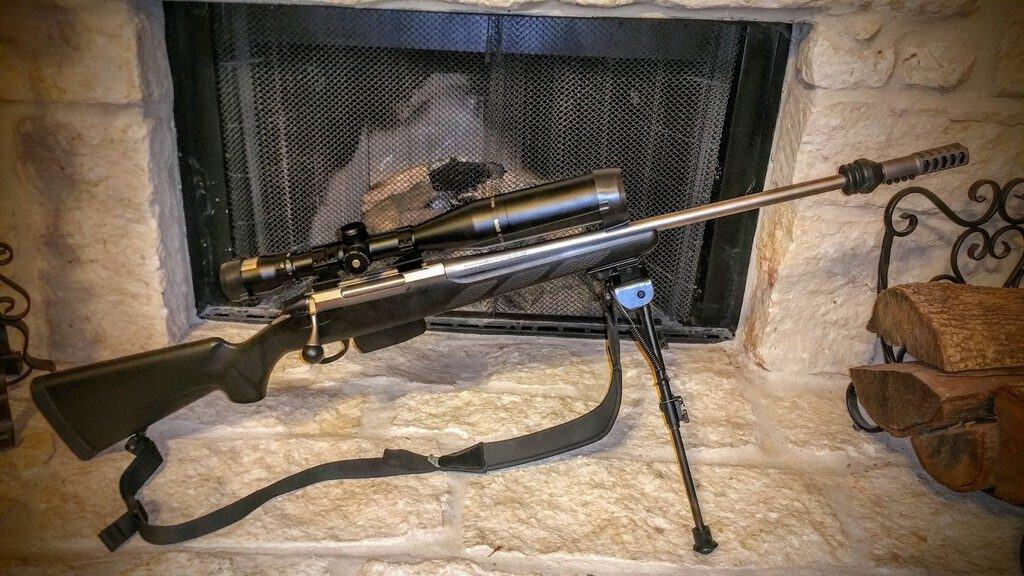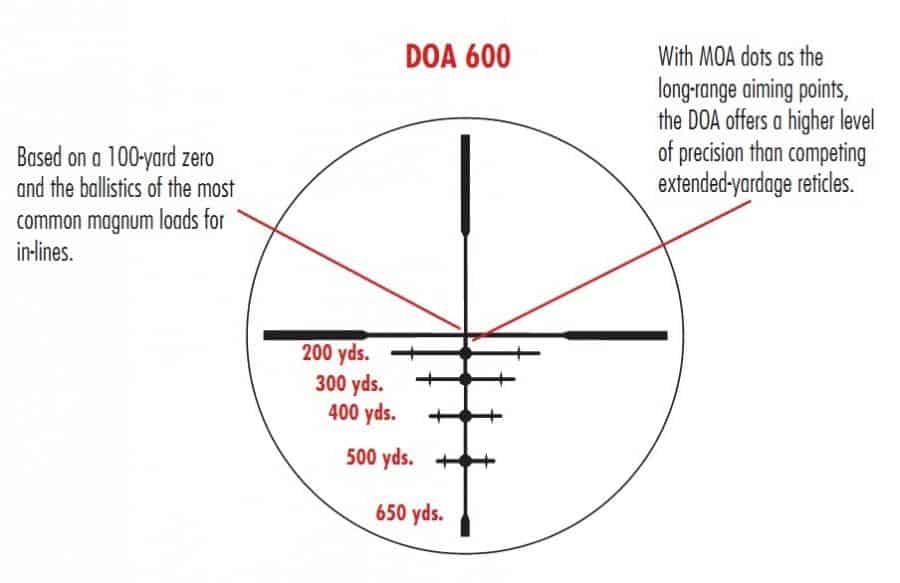Hey there, sharpshooter! Aiming for those far-off targets but sick of using good ole-fashioned Kentucky windage and Arkansas elevation? If so, consider stepping up your game by learning how to use the Bushnell DOA 600 reticle to increase your accuracy and precision for out to 600 yards!
The DOA 600 is a bullet-drop-compensator (BDC) reticle. Bushnell coined the term “Dead On Accurate” for it because the DOA 600 is specifically designed to help you quickly and accurately acquire targets and get rounds downrange quickly, all without having to make any adjustments to the turrets of your scope. Sound interesting? Read on!
HOW TO USE YOUR BUSHNELL DOA 600 RETICLE:
FOCUS THE OCULAR
If this is your very first time using your new reticle, you’ll want to adjust the ocular focus–the ring on the back end of your scope–to make sure you’ve got a crystal clear view of your reticle after attaching it to the scope.
Pro tip: look up into a blank area (like the sky) while adjusting the ocular focus; you want a perfectly focused view of your reticle, and it can actually be easier to focus it without the busyness of a target/background behind it.
ELIMINATE PARALLAX
Parallax error occurs when your reticle and the sight-picture of your target aren’t in the same plane. This space of separation results in the reticle moving around the target as your eye moves around the scope. This can cause big problems, especially as the problem is compounded at higher distance shots (which is the whole point of using a BDC reticle like the DOA 600.)
If you already have a basic understanding, get rid of it by adjusting the parallax turret (typically on the top or objective end of your scope) so that your reticle is collapsed into the same plane as your target. Do a quick test by anchoring your rifle in a gun rest and moving your head/eye around the scope to see if parallax is completely eliminated.
TARGET ACQUISITION…AT A DISTANCE!
Here is where the DOA 600 really shines as a BDC reticle. The crosshairs are set up to be dead-center at 100 yards, but just below bullseye you have reticle distance-dots along the 6 o’clock post for 200, 300, 400, 500, and 600 yards (respectively), so that aiming for a target farther out is a simple matter of recentering the appropriate distance-dot on the target.
SIZE UP YOUR TROPHY
Trophy hunting and on the lookout for that perfect rack of antlers to hang up above the fireplace? The DOA 600’s “Rack Bracket technology” provides built-in hashes along each of its precision distance-dots so that you can get an at-a-glance estimate of how big that buck you’re looking at really is. Just line up the inner brackets with the tips of his ears to ensure he’s at proper length–17’’ for whitetails; or line up the outer ends with a mule deer’s 24-inch ear tips.
TAKE THE SHOT
Once you’ve ensured that 1) your buck is up to par via the rack-brackets, and 2) you’ve accurately judged the distance to the target, center the correct distance-dot on your quarry, exhale slowly, and squeeze on that trigger!
PROS AND CONS
Etched glass reticles like the DOA 600 are really great for low light situations and for the fact that they are unaffected by recoil like traditional wire reticles can be. They can also be extremely useful for sizing up game on-the-spot and drawing an accurate holdover bead on far-off targets if you’ve put the time in beforehand on the range to ensure your distance-dots really do match up to the appropriately claimed yardage.
But users have run into problems when it comes down to accuracy during first time use…which brings up our biggest hesitation concerning the DOA 600 and other BDC reticles like it. Unfortunately, it’s darn-near impossible to account for all of the factors that go into bullet trajectory–ammo grain, caliber, bullet weight, rifle-type, scope height, and, of course, the anatomy and physiology of you, the shooter.
So, while the distance-dots can be useful for quickly sizing up a target and getting shots downrange with some level of accuracy, they can be very misleading. Users have found that the yardage estimates that the DOA 600 claims are very inaccurate right out of the box, and it is only after spending ample range time figuring out just how much the distance-dots are affected by non-factory ammunition fired out of a non-factory rifle that you can be fairly sure of your accuracy.
To sum up: you can absolutely use the DOA 600 to get extremely accurate holdover and windage estimates…if you’ve practiced with it and gotten a feel for how it performs with your hunting setup and equipment. But if you slap it on your scope and head straight out into the field assuming it’ll do exactly what it claims to do, you run a big potential risk of missing your target, or even wounding an animal.
Conclusion
If you’re willing to put the time and effort into focusing your reticle, zeroing your scope, range-testing before heading out into the field, and in general just getting familiar with how you and your DOA 600-equipped weapon function at long-range shooting, then the DOA 600 can be an extremely quick and easy tool for getting shots downrange and on-target! We’re sure that in no time you’ll be sizing up a buck in the far-off distance, and we hope that you’ve enjoyed the tools we’ve given you in this handy guide for how to use your new Bushnell DOA 600 reticle so that you can do just that.
If you enjoyed this article you’ll probably like these:




